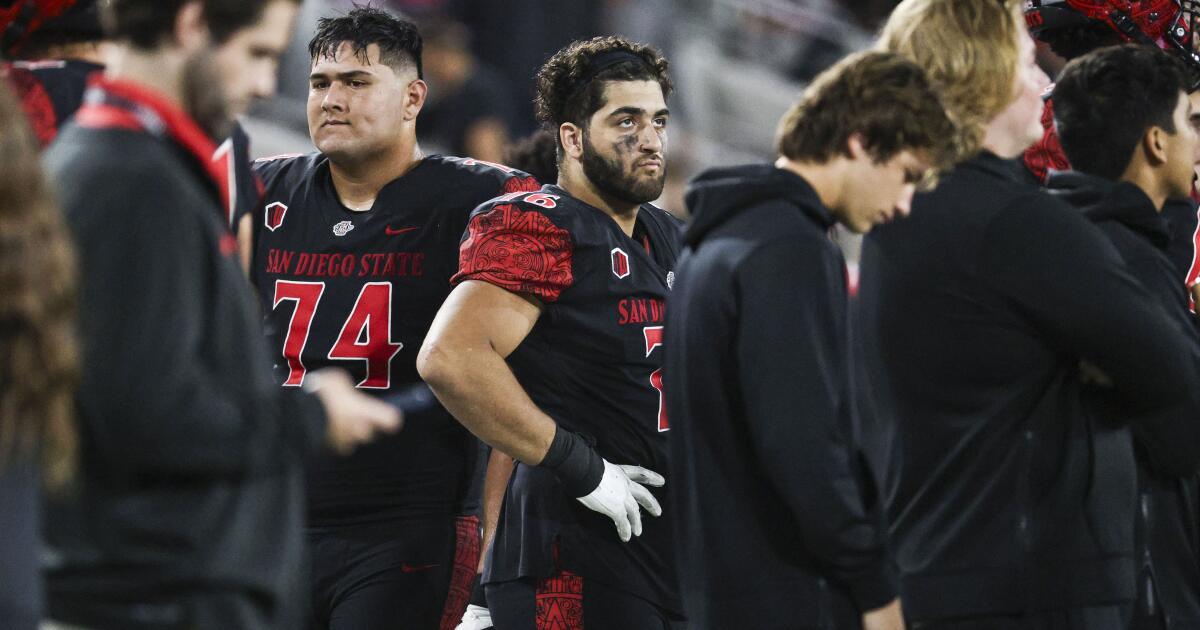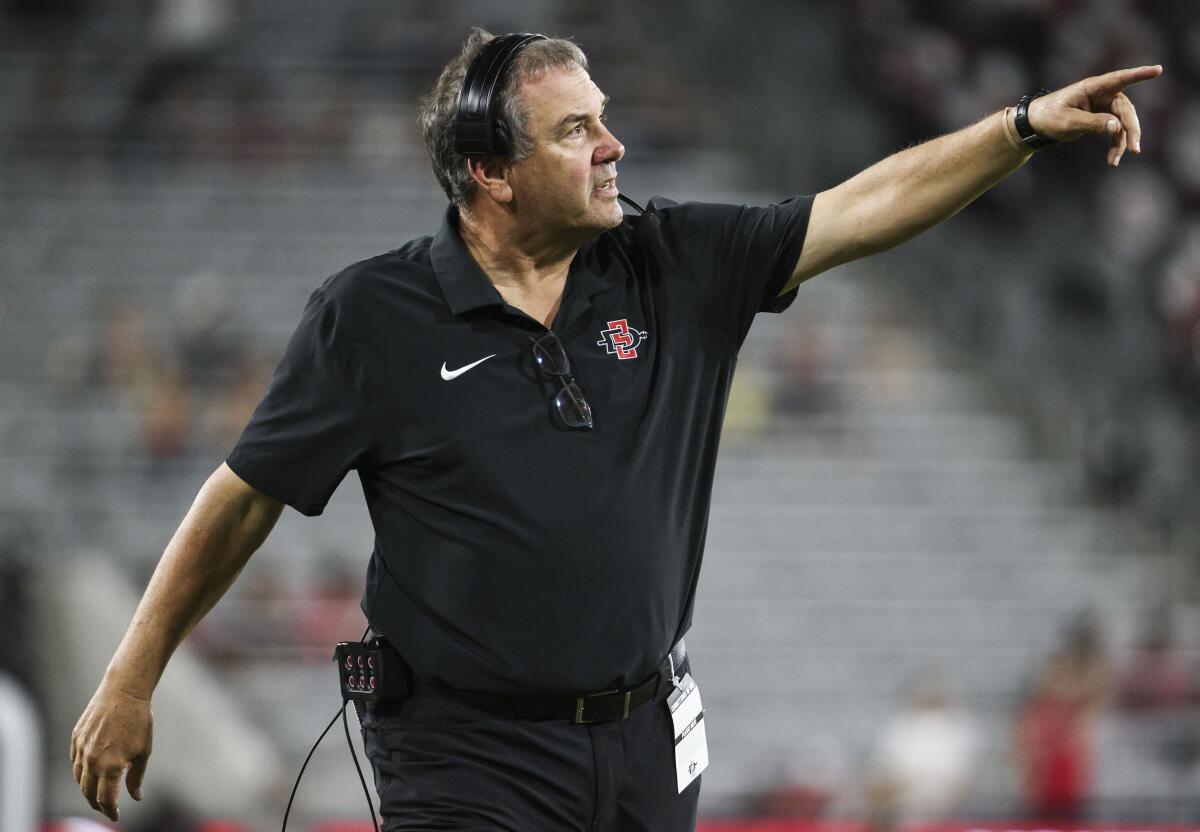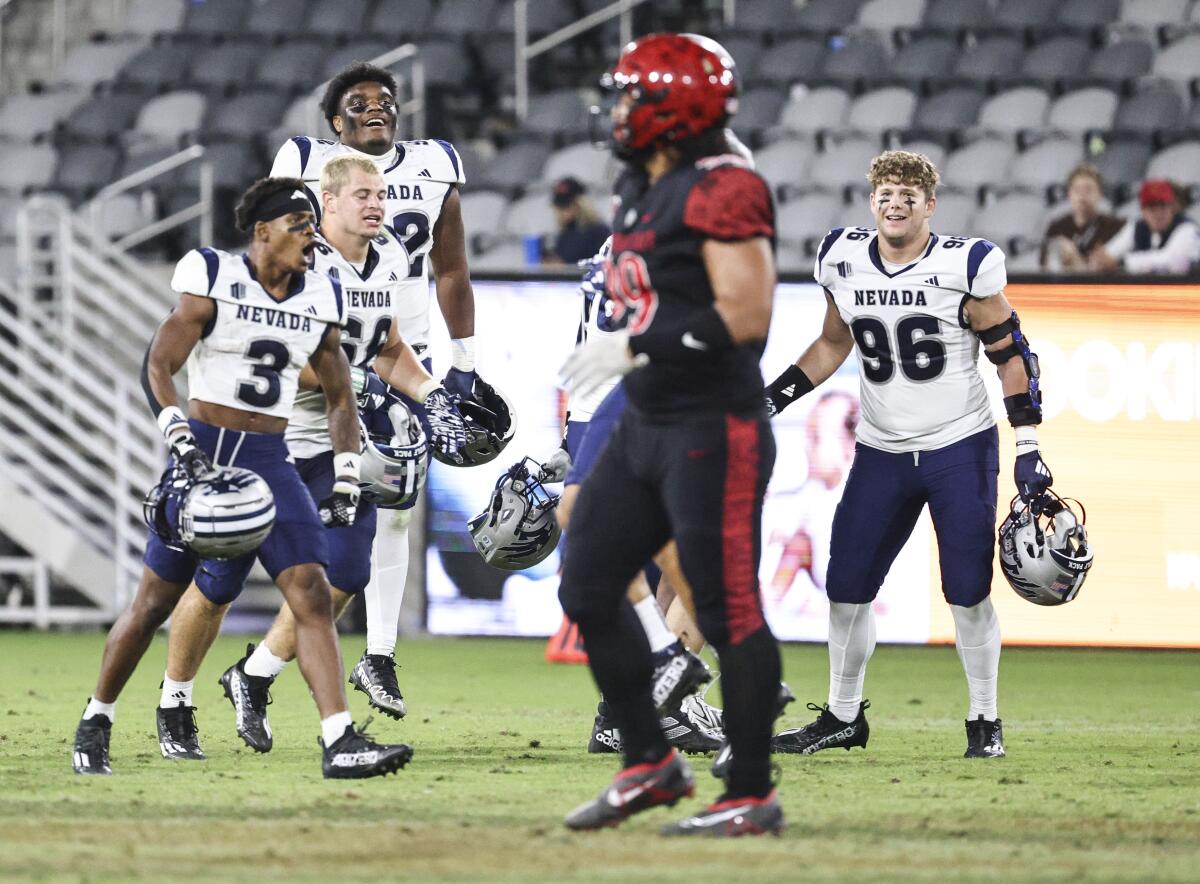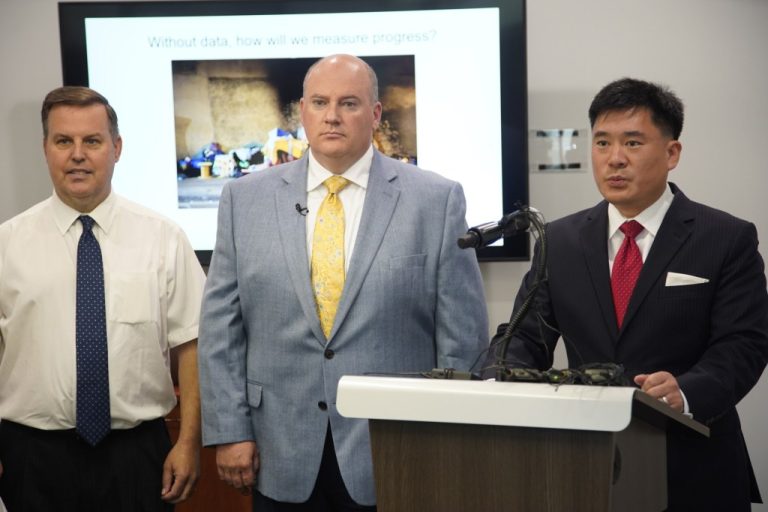
There’s no way to explain or justify how knuckle-dragging low the San Diego State football program feels after an unfathomable, unexplainable 6-0 loss to Nevada on Saturday.
Nevada, which had lost 16 straight games.
Nevada, which had allowed the most yards per game in the country.
Nevada, 129th in scoring defense among 130 major-college teams.
This was not just one loss, not in symbolism or substance. This was the type of jaw-dropper, the fifth loss in six games, that defines program eras. This was the sort of nose-pincher, in the context of an increasingly bruised bigger picture, that gets coaches fired.
The Aztecs quickly have gone from a tough and difficult “out” two seasons ago to middling and, to this point in 2023, uninspired and utterly lost.
The question evaluators always pose: Is a program heading in the right direction? With this head-scratcher of a loss moving the Aztecs to 10-11 the last two seasons, what’s your answer? The 12-win season in 2021, with more players stockpiled by former coach Rocky Long than not, seems like 100 years ago.
In today’s game, with NIL enticements and transfer portal pivots, you fall behind faster and farther. At a place like San Diego State, without brimming war chests and tradition stretching for generations, keeping pace demands a cocktail of excitement and winning. The university’s basketball program provides the gold standard and blueprint.
Right now, though, the Aztecs wearing shoulder pads possess neither.
“Obviously, we are pretty disappointed in our performance,” SDSU coach Brady Hoke said Saturday. “It’s not what we expected.”

San Diego State coach Brady Hoke yells to his players during Saturday’s loss to Nevada.
(Meg McLaughlin/The San Diego Union-Tribune)
How could they? How could anyone? The program already has hemorrhaged about 5,000 season ticket holders — some because of a deteriorating product, some because of skyrocketing prices — with more defections coming and Snapdragon Stadium bond payments in their infancy.
All of this feels magnified, given that it’s happening during a run of relative program prosperity. San Diego State’s last losing season came in 2009. The last non-pandemic season without a bowl game? That was 2009, as well. Those low-water marks are on the table now.
The loss to Nevada ranks as one of the worst in modern program history, given the prolonged Wolf Pack skid and the Aztecs, double-digit favorites, coughing it up at home with a shot to move to .500 and breathe life into bowl chances.
Imagine the impossibly heavy lifting facing Aztec recruiters who will fan out during another off week. How do you attract players, beyond showing them daily forecasts on a loop?
We didn’t end up in a Power 5 conference, but we did just get shut out by a team that had not won in 16 games.
The defense deserves credit for holding Nevada to two first-half field goals. That should be a “W” every single time. The offense, though, has become completely toothless.
The Aztecs not only finished without a point, but gained just 204 yards. Iowa, the country’s worst in total offense, averages 232.4 per game. That became impossible to understand, given that Nevada had allowed 510 yards each game coming in.
There is no consistent home-run threat in the running game, a la Rashaad Penny and D.J. Pumphrey. The Aztecs sit at No. 114 in passing offense. They finished with 47 yards in the air, no misprint, against a team allowing nearly 315.
Even program apologists wearing the rosiest of glasses found themselves hanging on by a thread. That thread snapped against Nevada. Perception, which is becoming reality: Boring, losing football does not sell.
Is it leadership? Is it the players? Because you better hope it’s not both.

Nevada players celebrate after beating San Diego State on Saturday.
(Meg McLaughlin/The San Diego Union-Tribune)
Mediocrity used to be somewhat acceptable on Montezuma Mesa, given the lack of long-term winning. Sleeve-rolling of the last decade and beyond changed that, however.
The Aztecs became unflappable winners, the gritty underdog who out-toughed teams and made the Pac-12 develop night sweats. That’s gone now, too.
How do you sell hope next season if nothing changes? What inspires a shred of confidence that the buy-sell program arrow will point up? The Aztecs have a ticket-pricing crisis coupled with one of the on-the-field variety.
That’s a show killer.
Some say the Aztecs cannot afford to move on from Hoke, given a nearly $5 million buyout he would be owed. The better question: Can they afford to embrace the status quo, given ticket and game-day revenue losses?
Flushing that money does not account for the tough-to-quantify recruiting and player-retention losses that weaken a program’s long-term earning potential from the inside.
Big decisions are coming. Comfortable ones? Hardly.





